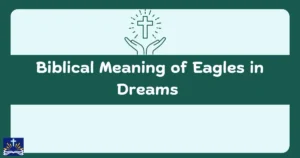The Bible is not just a book; it’s a fascinating collection of texts shaped by centuries of historical development.
The Bible stands as one of the most influential and widely read texts in human history. Its significance transcends religious boundaries, influencing culture, language, and ethics across the world. But how old is the Bible? Answering this question requires a journey through history, examining its origins, development, and preservation over millennia.
Understanding the age of the Bible isn’t just a matter of pinpointing a date. It involves diving into the contexts in which its various parts were written and how these texts came together to form the holy scripture we know today. This journey highlights the rich tapestry of history, culture, and beliefs woven into the Bible’s creation.
This blog will delve into the historical development of the Bible, exploring its formation, its authors, and its journey through the ages. From ancient manuscripts to its influence on modern society, we’ll uncover the story of this monumental text, answering key questions along the way.
The Bible as a Collection of Books
The Bible is not a single book but a compilation of 66 books (in most Protestant traditions) or more (in Catholic and Orthodox canons). These books were written by multiple authors over many centuries and include poetry, history, law, prophecy, and letters.
Examples
- The Book of Psalms is a collection of poems and hymns attributed primarily to King David.
- The Book of Romans is a letter written by Paul to the early Christian church in Rome, addressing theological concepts and practical faith.
- The Age of the Bible
Tracing the Ancient Roots of the Bible
The Bible is one of the oldest and most influential texts in human history, with its origins dating back thousands of years. It is a collection of sacred writings composed over centuries, offering wisdom, guidance, and spiritual insight.
1Bihting the Timelessness of Scripture:
- Genesis 1:1 – “In the beginning, God created the heavens and the earth.”
- Exodus 20:1-2 – “And God spoke all these words, saying, ‘I am the Lord your God…'”
- Psalm 90:2 – “From everlasting to everlasting you are God.”
- Isaiah 40:8 – “The grass withers, the flower fades, but the word of our God will stand forever.”
- Deuteronomy 31:9 – “Then Moses wrote this law and gave it to the priests…”
- Hebrews 1:1-2 – “Long ago, at many times and in many ways, God spoke to our fathers by the prophets.”
- Job 19:25-26 – “For I know that my Redeemer lives…”
- 2 Peter 1:21 – “For no prophecy was ever produced by the will of man…”
- John 1:1 – “In the beginning was the Word, and the Word was with God, and the Word was God.”
- Psalm 119:89 – “Forever, O Lord, your word is firmly fixed in the heavens.”
Examples Reflecting the Bible’s Ancient History:
- The Dead Sea Scrolls, discovered in 1947, contain some of the oldest known biblical manuscripts, dating back over 2,000 years.
- Archaeological findings confirm the Bible’s historical depth, such as the Siloam Inscription, which corresponds to events described in 2 Kings.
The Historical Timeline of the Bible’s Formation
The Bible’s compilation spans centuries, beginning with oral traditions and written texts in ancient times. Its historical development showcases its enduring significance across generations.
1Bible Verses Demonstrating Historical Events in Scripture:
- Exodus 3:14 – “God said to Moses, ‘I am who I am.'”
- Genesis 15:6 – “And he believed the Lord, and he counted it to him as righteousness.”
- 2 Samuel 7:12-13 – “I will raise up your offspring after you…”
- Isaiah 53:5 – “But he was pierced for our transgressions…”
- Jeremiah 31:33 – “I will put my law within them, and I will write it on their hearts.”
- Matthew 5:17 – “Do not think that I have come to abolish the Law or the Prophets…”
- Luke 24:44 – “These are my words that I spoke to you while I was still with you…”
- Acts 7:38 – “This is the one who was in the congregation in the wilderness…”
- Revelation 1:8 – “I am the Alpha and the Omega…”
- Daniel 9:24 – “Seventy weeks are decreed about your people…”
Examples of Bible Formation Through History:
- The Old Testament was written over approximately 1,000 years, with the earliest books likely composed around 1400 BC.
- The New Testament, written in the 1st century AD, reflects the teachings and life of Jesus, compiled within decades of His ministry.
Bible Verses About Life: Reflecting on the Meaning
Period of Time
The writing of the Bible spans over 1,500 years, beginning around 1400 BCE and extending to the late 1st century CE. The Old Testament’s writings started earlier, while the New Testament was written within a century after Jesus’s death.
Number of Authors
Approximately 40 different authors contributed to the Bible, ranging from kings and prophets to fishermen and tax collectors.
Examples
- Moses, traditionally regarded as the author of the Pentateuch (the first five books).
- Luke, a physician, wrote the Gospel of Luke and the Acts of the Apostles.
The Old Testament

The Old Testament, also known as the Hebrew Bible, forms the foundation of Jewish and Christian traditions. It contains 39 books (in Protestant traditions), which include the Torah, historical books, wisdom literature, and prophetic writings.
Examples
- Genesis, the first book, narrates the creation of the world and the beginnings of humanity.
- Isaiah, a prophetic book, foretells the coming of the Messiah.
The New Testament
The New Testament comprises 27 books, focusing on the life and teachings of Jesus Christ and the early Christian church. It includes the Gospels, epistles, and apocalyptic literature.
Examples
- The Gospel of John emphasizes Jesus as the Son of God and the path to eternal life.
- Revelation, written by John, offers a vision of the end times.
The Process of Writing the Bible
Period of Writing
The Bible’s texts were written across centuries, with oral traditions often preceding written records. Early writings were done on materials like papyrus and parchment.
Number of Authors
Its many authors include prophets, apostles, and community leaders, each contributing their unique perspectives and experiences.
Examples
- Jeremiah, the “weeping prophet,” documented Israel’s struggles and God’s promises.
- Paul, an apostle, wrote letters addressing issues in early Christian communities.
The Oldest Bible Manuscripts
Some of the oldest surviving biblical manuscripts are:
- The Dead Sea Scrolls, which date back to the 3rd century BCE and include portions of nearly every Old Testament book.
- Codex Sinaiticus, a 4th-century manuscript containing the complete New Testament.
The Bible During the Medieval Period
From Jerome to King James Version
Saint Jerome translated the Bible into Latin (the Vulgate) in the 4th century, making it accessible to the Western church. The King James Version (KJV), completed in 1611, became a cornerstone of English-speaking Christianity.
The Age of the King James Bible
The KJV is over 400 years old, yet it remains one of the most widely used English Bible translations today.
The Influence of the Bible on the English Language
The Bible has profoundly impacted the English language, contributing phrases like “by the skin of your teeth” and “the powers that be.” It shaped linguistic styles and literary traditions for centuries.
Examples
- William Tyndale’s translation influenced modern English vocabulary.
- Shakespeare often drew inspiration from biblical themes.
The Bible’s Significance in Modern Times
The Bible in Public Life
The Bible continues to play a vital role in shaping laws, ethics, and public discourse.
Should We Stand When the Bible is Read?
In many traditions, standing during the Bible’s reading signifies respect and reverence. While not required, it reflects the text’s significance.
Comparing the Bible to Other Ancient Documents

The Bible stands out among ancient texts for its preservation and influence. While other works like Homer’s Iliad exist in far fewer manuscripts, the Bible boasts thousands of copies.
Examples
- Over 5,800 Greek New Testament manuscripts survive today.
- The Iliad has fewer than 650 copies.
How Was the Bible Compiled?
The Bible was compiled over centuries, with church councils determining the canon. Factors like apostolic authorship, consistency with doctrine, and widespread use influenced inclusion.
This process ensured that the Bible remains a unified yet diverse collection of texts.
Key Insight
- How old is the oldest Bible manuscript?
The Dead Sea Scrolls, dating back to the 3rd century BCE, are among the oldest manuscripts. - Who wrote the Bible?
Around 40 authors, including Moses, David, and Paul, contributed to the Bible. - Why is the King James Bible significant?
It is one of the most influential English translations, shaping language and culture since 1611. - What materials were used to write the Bible?
Early texts were written on papyrus, parchment, and later paper. - How many books are in the Bible?
The Bible contains 66 books in most Protestant traditions, with variations in other canons.
Conclusion
The Bible’s age and historical development showcase its enduring legacy and significance. As a collection of books written over centuries, it reflects the beliefs, struggles, and hopes of its authors and communities.
Whether viewed as scripture, literature, or history, the Bible remains a cornerstone of human culture, inviting ongoing exploration and reverence.

Hi! I’m Zaide Smith, the admin of Bibblehearts.com, where I strive to curate engaging content that inspires and connects our readers. With a passion for storytelling and community building, I’m dedicated to fostering a welcoming space for all.










